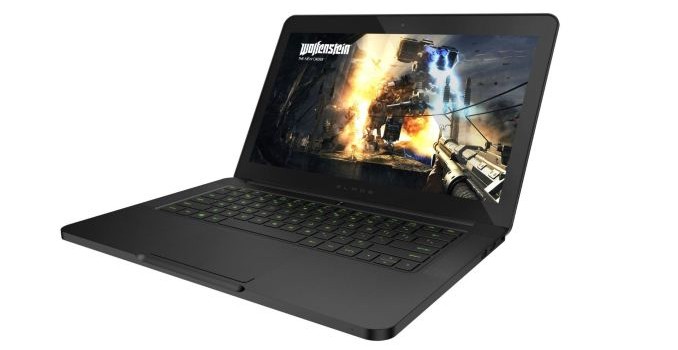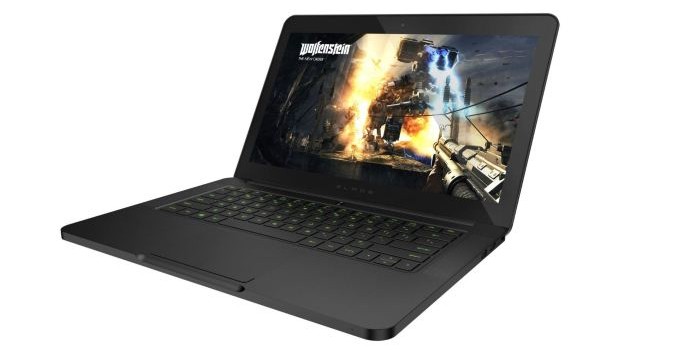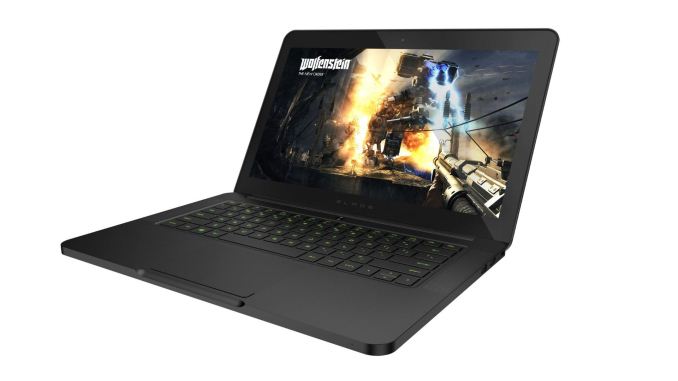
High-End Laptop Recommendations
Our holiday guides have covered a lot of products so far, and just on the laptop side of things we’ve looked at budget laptops, Chromebooks, and mainstream offerings – and let’s not forget the related Tablets guide, which overlaps with hybrid devices. Today, we wrap up our laptop coverage with the final catch-all category: “high-end” laptops. High-end means different things to different people, and with a price range of $1500 to $3000+ (you can spend more, but we’ll try to keep things at least somewhat reasonable) there are a ton of options.
The bird’s eye overview is that most people spending this much money on a laptop want a top quality device that also offers excellent performance, and it should have a display and build quality to match. Even with those constraints, however, there’s still some wiggle room, and there are frankly a lot of potential options. I can’t hope to cover every single one, but if you’re wondering what I think are the best laptops of the past year or so, this is my current “Who’s Who” list.
Broadly speaking, there are four major categories of high-end laptops. First is your do everything go anywhere laptop that may not offer the absolute fastest performance, but it’s also not going to require you to lug around the AC adapter and constantly be on the lookout for power outlets. This is the jack of all trades category, which means office, internet, multimedia, and even moderate gaming are all possible – and again, battery life shouldn’t have to suffer in the process. Then of course we have gaming-centric notebooks that will sacrifice battery life in order to give you the best notebook gaming experience possible. Third are the business laptops, which really make up the final two categories. There are general purpose business laptops, and then there are mobile workstations; in many ways the two are similar to the general use and gaming notebooks, as mobile workstations are typically business class laptops but with a workstation class GPU.
I mentioned in the Best $1000 Laptops guide that I get pretty particular about what a laptop needs to include once we hit the $1000 mark, and that applies even more when we’re talking about $1500 and up. There’s absolutely no reason to skimp on things like memory and SSD storage at this price point, and as far as I’m concerned the use of a merely average (meaning, TN and/or lower resolution) display is a serious mistake as well. But perhaps the best way to illustrate what sort of laptops qualify as great high-end offerings is to get right into our recommendations.
But before we do that, we do need to mention the elephant sitting in the corner: Broadwell. All of the laptops we’re looking at in the high-end market come with Intel’s Haswell processors, and we know that Broadwell updates will be launching in the near future. Core M (Broadwell-Y, aka BDW-Y) has already launched in a few products, but it’s important not to judge “big Broadwell” by the BDW-Y performance – doing so would be akin to judging the quality of Dell’s $2000+ laptops by their $500 offerings, or at least thinking the performance of a 50HP car could tell you all that you need to know about a 400HP car. Basically, the extremely limited TDP of BDW-Y makes it difficult to say how standard voltage Broadwell will perform. We could also get into Skylake, and perhaps some of the laptop manufacturers will choose to bypass Broadwell altogether and simply wait for Skylake, but that could be a dangerous waiting game considering Skylake won’t appear until 2H’15.
It’s not just about Broadwell/Skylake either; several laptops are still using previous generation NVIDIA Kepler GPUs, and while the new GM204 stuff isn’t due to be superseded any time soon, quite a few laptops with 700M or GTX 870M are still shipping in the latest configurations from certain OEMs. GTX 970M should be a pretty easy upgrade from GTX 870M, as I’d expect similar thermal requirements, and we’ve seen several companies do exactly that. The others I’m guessing are waiting for Broadwell before making the switch, although for gaming purposes Broadwell vs. Haswell isn’t likely to be a major change. So while we have recommendations today, there will almost certainly be new Broadwell versions in the not too distant future.
All Purpose High-End Laptops

Apple MacBook Pro Retina 15 ($2409)
Let’s get this out of the way: I’m not a MacBook or an OS X user; I prefer Windows, thank-you-very-much (but I have nothing against people who don’t). That said, if you want a laptop that gets basically every aspect right, Apple is the company to beat and the MacBook Pro Retina 15 shows exactly why that’s the case. It starts with the marquee feature, a high resolution 2880×1800 IPS display – and yes, Apple is one of the few companies to eschew the cost-saving decision to move to 16:9 aspect ratio displays (at least on the MacBook line; the latest iMacs are 16:9). The display looks great, and what’s more, it comes with very good color accuracy out of the box. That alone puts it above the vast majority of competing laptops, but it doesn’t end there.
Apple was one of the first companies to go “all-in” on SSD storage, starting with the MacBook Air and not long afterwards doing the same for the MacBook Pro. There are size benefits to using SSDs of course, but performance – and more importantly, long-term performance over years of use – is the biggest draw, as there’s no need to defragment your drive and random access speeds are orders of magnitude faster than a conventional hard drive. The latest MacBook Pro laptops have moved to PCIe based storage, further improving performance. The processor is top of the line as well, with the Crystal Well i7-4750HQ powering the base model, delivering the fastest integrated graphics that Intel offers. Of course, the model we’re recommending comes with the i7-4870HQ (2.5-3.7GHz), and for graphics duties it also adds the GeForce GT 750M (which is due for an upgrade).
Rounding out the performance aspects, you also get 3×3 802.11ac WiFi (no other laptop I’m aware of supports three 11ac streams) and 16GB RAM, with battery life upwards of eight hours for realistic use. Now on top of that add the excellent build quality and aesthetics, and then throw in a touchpad that’s unmatched in the PC space as far as I’ve seen. About the only knock against the MacBook Pro Retina 15 (or 13 if you don’t need the added performance of a quad-core CPU and Iris Pro Graphics / GT 750M) is that the price is higher than the competition, but there is not a single Windows laptop that can beat Apple in every single area. The one caveat is that Apple’s focus remains OS X, and while you can install Windows on a MacBook you are somewhat limited on graphics driver support and battery life takes a hit. Still, it’s no surprise there are plenty of people that buy a MacBook Retina and then run Windows on it. A Broadwell (or Skylake) update is inevitable, but until that happens this is the all-around laptop to beat.
The MacBook Pro Retina 13 is a decent option as well, with the smaller size limiting some of the performance aspects. If you need more than a MacBook Air but don’t want the size of the rMBP15, the rMBP13 is a viable choice. You’ll get a dual-core processor, and given the difficulty of upgrading the storage I’d suggest going for the 512GB model for just under $1800, though the 256GB model at around $1500 isn’t bad. The i5-4308U processor comes with Intel’s Iris Graphics, but not the embedded DRAM so it’s not quite as potent.
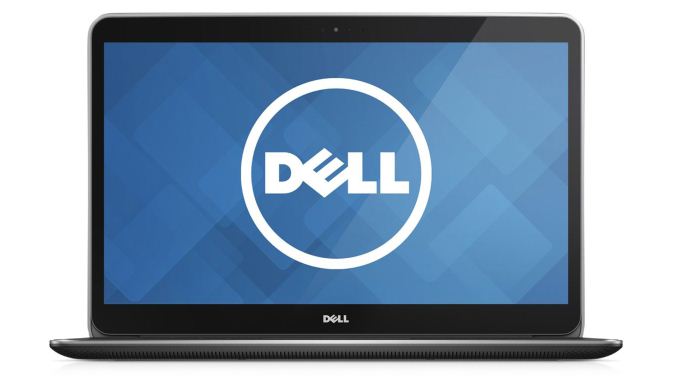
Dell XPS 15 9530 ($2002)
I just said that you couldn’t beat Apple’s MBP Retina 15 in every area, but that doesn’t mean you can’t come awfully close. Dell’s XPS 15 is arguably the best alternative, and it actually exceeds Apple’s offering in a few areas, though it also falls short in others. Starting with the good, the resolution is 3200×1800 and you get a touchscreen as a bonus. For the $2000 model we’re recommending, you also get 512GB SSD storage and a large battery that results in good battery life. Of course $2000 means you’re paying $400 less than the rMBP15, which is no small savings, and you still get a great looking laptop with a GT 750M graphics chip.
So where does Dell’s XPS 15 fall short? There are really only a few potential concerns. First, the color accuracy of the display doesn’t match the rMBP without doing calibration, and that’s not something everyone is able to do as it requires another $150+ in hardware and software. Second, there are no Thunderbolt ports, which may or may not matter – most of the people I know that use Thunderbolt peripherals are also using Mac hardware.
Finally, in terms of performance, the i7-4712HQ processor is reasonably fast, but Apple’s base model includes the i7-4750HQ which is slightly faster and also has better processor graphics; the upgraded rMBP15 models meanwhile further distance themselves in CPU performance. I think part of the reason for Apple’s advantage in CPU performance is that they have a superior cooling solution – in our review, the XPS 15 did get quite warm, and we had occasional throttling issues that required a reboot to restore performance levels. Apple also uses a PCIe-based SSD compared to a SATA-based design in the XPS 15, and they have a 3×3 802.11ac adapter compared to Dell’s 2×2 solution; it’s not going to be a huge difference for most users, but Apple does still lead in these areas.
Overall, the XPS 15 is a great laptop, and it can handle just about everything you might want to throw at it. If you generally prefer running Windows instead of OS X, the price makes the XPS 15 a very compelling alternative. Again, the biggest issue now is more a question of timing, as the current XPS 15 is over a year old and is thus due for some upgrades. Note also that there are less expensive XPS 15 models with 1080p displays (pretty sure they’re TN, though I couldn’t confirm), but they tend to compromise other areas as well (e.g. less battery capacity and only a caching SSD along with a conventional hard drive for storage). $1648 isn’t a bad price for what you get, but the extras that come with the higher spec model are certainly worth the price increase in my book.

Samsung ATIV Book 9 Plus ($1500)
If you’re looking for other alternatives, the Samsung ATIV Book 9 Plus is basically a competitor to the rMBP13. For $1500 with the current $300 sale, you get an i7-4500U, 8GB RAM, 256GB storage, and a beautiful 3200×1800 QHD+ touchscreen display. The overall design and aesthetics of the Book 9 Plus are also great, and you get about seven hours of reasonable use battery life in a three pound Ultrabook package. There are less expensive models that still come with the stellar QHD PLS display, and the current sale knocks $300 off the price, but the base model only comes with a rather limiting 4GB RAM and 128GB SSD, which is why I held off listing this in the mainstream guide. Note that out-of-box color accuracy is again average, so if color accuracy is important you’ll need to calibrate the display yourself.
High-End Gaming Laptops

MSI GT72 Dominator Pro ($3200)
If you want the flat-out best gaming notebook currently available (in my opinion of course), look no further than MSI’s new GT72 Dominator Pro. There are several GT72 models available, including those with GTX 970M graphics, but for a no-compromise notebook you’ll really want to get GTX 980M in the GT72 Dominator Pro-445. What’s special about that model (as well as the even more expensive Pro-444) is that it includes an IPS display, fixing pretty much the only real complaint I had with the GT72 we reviewed. Other impressive features include an i7-4860HQ processor, 32GB RAM, 512GB (4x128GB RAID) SSD storage, 1TB HDD storage, and an excellent cooling solution. Ironically, one of the few classes of notebook that could legitimately drive HiDPI displays in games is not yet available with a HiDPI option – 17.3″ notebooks are pretty niche these days and unfortunately I haven’t seen any with more than a 1920×1080 display.
The MSI GT72 also manages to deliver good battery life, thanks to the ability to disable the GTX 980M, reboot, and run on the internal graphics. It’s perhaps not always the ideal way of doing things, but most notebook gamers don’t worry too much about battery life regardless and it’s always nice to have the option if needed. Aesthetically, I think the GT72 also wins out over the competition from Alienware, ASUS, Clevo, and Toshiba (not to mention the previous generation MSI GT60/GT70); obviously aesthetics are mostly personal preference, so feel free to disagree. The Alienware 17 of course is still in need of an update to 970M/980M, so until that happens I’d pass on the current GTX 860M/870M/880M models.
If you’re looking for other options, I’d place the ASUS ROG G751JY next in line for top gaming notebook. ASUS has a good design with ample cooling, and the price is better than the GT72. $2824 right now will get you the same i7-4860HQ, 32GB RAM, 512GB SSD (PCIe instead of RAID SATA M.2), 1TB HDD, and an IPS 1080p display as the GT72. My only real complaint against the ASUS G751JY is that I prefer the look of the MSI GT72. Then again, the price difference (for models with an IPS panel) is pretty significant, at more than $300, which means for a lot of people the ASUS notebook is going to be a better bargain. In that case, you should look at the lower spec G751JY, which drops to 256GB of SSD storage and 24GB RAM with an i7-4710HQ for $2278 but otherwise has the same specs as the more expensive model. Bang for the buck, that’s the best way to get a GTX 980M right now.

Gigabyte’s new P35Xv3-CF4 is so new that I haven’t seen any reviews yet, but it’s very intriguing and could potentially top the list if it manages to stay cool enough. It has a 15.6″ 2880×1620 display, which means it’s likely the same panel as the MSI GS60 we looked at. The chassis is quite thin, especially when you factor in the presence of a GTX 980M GPU. It measures just 20.9mm thick (0.82″) and weighs 2.2kg (4.84 lbs.), which is about half the size of the GT72. You can even get two mSATA SSDs, a 2.5″ HDD, and an optical drive with the P35Xv3. Pricing is a bit higher and I’m a bit concerned about cooling a 980M in such a slim chassis, but assuming everything works properly this is a pretty awesome looking gaming notebook.
If you’re simply looking for the least expensive option with a GTX 980M, however, that crown currently belongs to Clevo (with the MSI GT70 coming close, depending on specs). The Clevo P650SG is a 15.6″ chassis that can be found with 3K and 4K displays at some boutiques, but $1859 will get you a 1080p IPS display which is a great starting point. To get the price that low there are other compromises, like a 128GB SSD instead of a larger model and “only” 16GB RAM (which is still plenty for most users). I haven’t had a chance to personally test the P650SG so I can’t say for certain whether it’s a noteworthy improvement over the previous generation of Clevo notebooks (P150SM/P157SM and P170SM/P177SM); that said, the design has been updated and support for optical drives was dropped in the process, and at least in images and on paper the new Clevo notebooks look decent.

There are a few other gaming notebook potentials worth mentioning, though I’m not going to explicitly recommend any of these right now. First, the Razer Blade 14 has a lot of great elements and strikes a nice balance of size and performance. It’s sort of like the gaming equivalent of a MacBook Pro Retina, though the gaming slant does change the looks quite a bit and battery life takes a hit in the process. The biggest issue with the Razer Blade 14 (and the Razer Blade Pro for that matter, which tops out at a GTX 860M) is that the Blade hasn’t been updated to use the new GTX 970M yet. And really, that’s the only thing I want from the Blade right now, as otherwise it’s an excellent laptop. It has a great display and excellent build quality, so it’s pretty much the souped-up “Men in Black” take on the rMBP and XPS 15. Gigabyte’s AUROS X3 is in a similar situation: GTX 870M with a $2100 price tag make it difficult to recommend for pure gaming, though the 14″ 3200×1800 display and 512GB RAID SSD storage at least is good; give me 970M and I’m sold.
There are even more powerful gaming notebooks out there, but SLI/CrossFire notebooks generally compromise on the “notebook” aspect and tend to be more “luggable” computers. There are really only three companies doing SLI notebooks these days, Clevo and Alienware go after the top with 980M SLI (note that Sager is really just Clevo, but with modified model names), and Gigabyte has a few lower tier SLI setups.
Starting with Alienware, the AW18 is now the only SLI option, and as with the AW17 it hasn’t been updated with (official) support for GTX 970M/980M yet, so I’d hold off until that happens if you’re interested in an Alienware SLI notebook. Clevo on the other hand has several variations of SLI notebooks. The P370SM-A/P375SM-A/P377SM-A models support mobile Haswell CPUs (up to i7-4940MX) and SLI GTX 980M, while the truly monstrous P570WM3 supports desktop LGA2011 CPUs (up to i7-4960X) with SLI 980M. We’re due for an update of the SLI models, at least I think we are, so it might be best to wait a bit longer at this point. There are also new Clevo P7xxZM models coming, apparently in both 15.6″ and 17.3″ configurations, which support desktop Haswell CPUs up to the i7-4790K and a single GPU (up to GTX 980M), but I don’t know of any companies currently shipping those.

On the lower tier SLI front, Gigabyte has their recently launched AUROS X7Pro that supports SLI 970M, which should deliver performance clearly ahead of a single 980M configuration (provided SLI scales as expected, which isn’t always the case). Around $2500 will get you i7-4860HQ, 16GB RAM, 2x256GB SSDs, and a 1080p IPS display, so it certainly checks all the right performance boxes. Battery life is likely a weak point, but otherwise it’s a sleek looking design. The older Gigabyte AUROS X7v2-CF1 is also available, with dual GTX 860M. The problem is that GTX 860M SLI is going to deliver about the same level of performance as a single GTX 980M, there’s not really a price advantage for the AUROS over the GT72, and you still have to deal with the occasional issues of running two GPUs instead of a single GPU. It’s still a nice looking laptop with good specs, but unless there’s a pricing advantage I would always recommend taking a single GPU over two GPUs that may or may not be able to equal the single GPU.
High-End Business Laptops
It can be hard to find well equipped business laptops that don’t cost too much, which almost inherently makes all good business notebooks “high-end” offerings. By the time you outfit a business class laptop with 8GB RAM and a 256GB SSD (which is pretty much my baseline recommendation for any serious laptop), $1500 is a reasonable starting point, and other options can quickly scale the price to $2000 or more. As far as other features are concerned, really the only thing I think most business users need is a good display, good build quality, and good battery life – I’ve supported executives with laptops in the past and pure performance or the presence of a discrete GPU is almost never a factor.
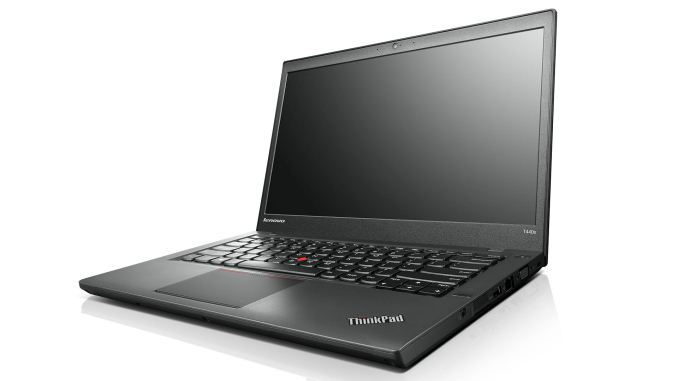
Lenovo ThinkPad T440s ($1387)
ThinkPads in my mind are the quintessential business laptop. They may not look particularly sexy, and if you’re after vibrant colors there are very few options, but the T-series in particular has a well-earned reputation of being built to last. I’ve seen ThinkPads from the early Core Duo days that are still running strong and the owners continue using them. The T440s is the latest in the line of T-series laptops and it’s due for replacement as it’s more than a year old, but it will be several months before we see any Broadwell versions.
The ThinkPad T440s is a great business laptop with excellent battery life – the 3-cell battery lasts over seven hours while the upgraded 6-cell high capacity option doubles that to more than 14 hours of mobility. While there are less expensive models, they often compromise on storage and memory so I recommend looking at the $1749 (on sale for under $1400) model. That gets you a 14″ 1080p IPS display (note that certain models have a 1600×900 TN display), 8GB RAM, 256GB SSD, and Core i7-4600U processor so you’ve got everything most business users could want. The T440s is thinner than previous T-series offerings, measuring 0.81″ thick and weighing 3.5 pounds with the 3-cell battery. It’s not the fastest, thinnest, or lightest business laptop in the world, and as with most business offerings the price is a bit higher than I’d like, but overall this is a great laptop.
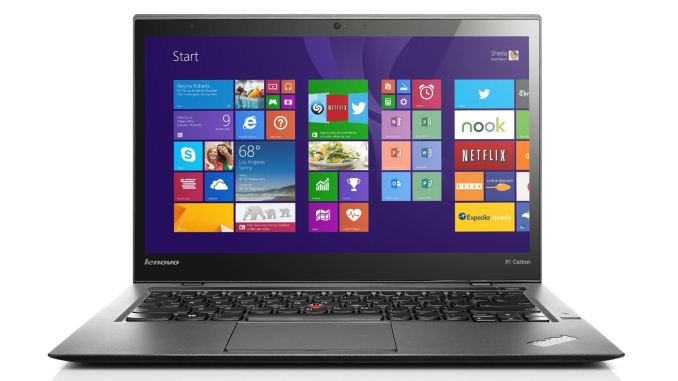
Lenovo ThinkPad X1 Carbon ($1775)
If you’re after something sleeker than the T440s, the ThinkPad X1 Carbon gets my recommendation. Performance is going to be similar to the above T440s, as the model I recommend basically has the same components: i7-4600U, 8GB RAM, 256GB SSD. The main advantage of the X1 Carbon is that it has a touchscreen 2560×1440 IPS display, plus it’s thinner and lighter than the T440s and the standard battery is good for up to 9 hours of mobility. Considering the upgrade in display quality, the current price of $1775 is fairly reasonable, though I’d pass on the less expensive models that ship with 4GB RAM and a 128GB SSD.
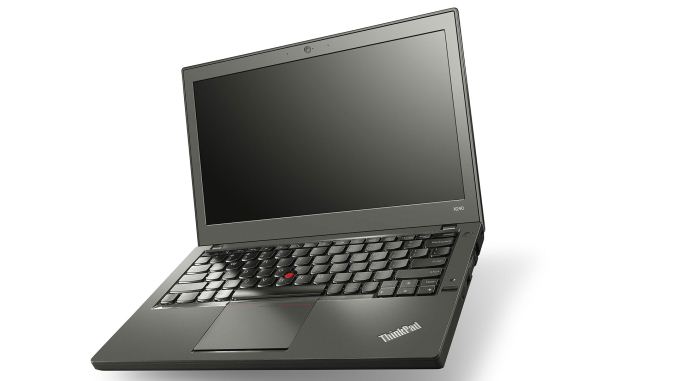
Lenovo ThinkPad X240 ($1587-$1866)
Another option is for those that want gobs of battery life – without having to carry around a sheet battery. Lenovo’s X240 starts at a bargain price of around $850, but the trimmings are decidedly lacking for the base model. Add the 1080p IPS upgrade, a faster Core i5 or Core i7 processor, 8GB RAM, 256GB SSD, 801.11ac dual band WiFi, and the 6-cell battery upgrade and you’re looking at $1500-$1900. The display is slightly smaller than the X1 Carbon (12.5″ instead of 14″), but the real selling point of the X240 is the internal 3-cell 24Wh battery with a swappable 3-cell 24Wh battery, or more importantly the 6-cell 72Wh option. That gives a combined 96Wh of battery capacity, delivering over 18 hours of mobility. Granted, the 6-cell battery protrudes quite a bit from the bottom of the chassis, but I still think it’s better than a sheet battery, and build quality on the X240 is also great.
In terms of other options for business laptops, the consumer class notebooks mentioned above are still viable – MacBook Pro Retina, Dell XPS, etc. are all solid offerings that could work in a business environment (unless there’s a need for specific business features). Dell, HP, and others also make competing business laptops, but while I complained about Lenovo’s prices being a bit higher than I’d like, the fact is the alternatives are generally no better – and they’re often worse. Still, there are some decent options. HP’s Folio 1040xt G1 for instance comes with the i7-4650U, which means it has HD 5000 Graphics instead of HD 4400. I’m not sure that really matters much for a business users, but the 14″ Ultrabook also comes with a 1080p IPS display, 8GB RAM, and 256GB SSD. The price however is $1939, so it’s about the same as (slightly more than) X1 Carbon.
Dell’s Latitude line requires you to buy from the 5000 or 7000 series if you want similar specs to the ThinkPads listed above, and battery life tends to be somewhat lower. Right now, however, there are some good sales running on Dell’s site – the Latitude E5450 for instance is $1259 (normally $1749) with 8GB RAM, 256GB SSD, 1080p (IPS I think) LCD, and an i5-4310U; it’s a bit chunky at nearly four pounds, but overall the price is very good for the specs. The Latitude E7440 meanwhile upgrades some of the materials and is built to be a bit more durable while being lighter, though it still weighs 3.6 pounds. The price however is a rather large jump considering otherwise similar specs: $1685 (on sale from $2404). If you’re after more performance and don’t care as much about weight, the Latitude E6540 is an older design (similar to the earlier XPS 15 models in aesthetics) that boasts higher performance components, and the current price is $1718 (normally $2455). It comes with a standard voltage i7-4610M, 8GB RAM, 256GB SSD, 15.6″ 1080p LCD (good quality TN, but still TN), and a large 97Wh battery that protrudes from the back; it also has Radeon HD 8790M graphics. Without the sales, I’d look elsewhere, but Dell often has some form of sale so they’re definitely worth a look.
Mobile Workstations
Before we get started with our final category, let’s make things clear: when we talk about a mobile workstation, the first requirement is that the laptop/notebook has some form of professional graphics – basically it needs an NVIDIA Quadro an AMD FirePro GPU. That alone is enough to technically qualify as a mobile workstation, but when I hear the term “workstation” I’m generally going to think of much higher than baseline performance. So while Dell’s Precision M3800 qualifies, the Quadro K1100M is a bit weak – and the same holds for the HP ZBook 14 with its AMD FirePro M4100. The M3800 incidentally is literally the same laptop as the XPS 15, with about a $200 price premium and the Quadro K1100M instead of the GeForce GT 750M. Anyway, if you want a lighter “mobile workstation” then those are basically the two best options, but I’m going to be looking at more potent GPUs. The bare minimum would be the equivalent of the GTX class, so K2100M/K3000M or above; on the AMD side, I’m looking for FirePro M5100/M6000 or above.


Dell Precision M6800 ($4185)
HP ZBook 17 G2 ($4478)
For maximum performance from a mobile workstation, you’re going to want the fastest GPU possible, and right now that’s the Quadro K5100M from NVIDIA. It’s still a Kepler-based solution, so we’ll probably see Maxwell GM204 derived offerings in the next six months or less, but until that happens this is as good as it gets for notebooks. There are currently three options for getting a K5100M: the Dell Precision M6800, the HP ZBook 17, or one of Clevo’s notebooks. I’ll admit that I’m biased against Clevo for this market, simply because I don’t feel they’re built as well or look as nice as the ZBook or Precision offerings, but they’re definitely an option.
Between the HP and Dell options, really it’s basically a toss-up in most areas. The ZBook 17 G2 is a newer design than the M6800 and HP’s DreamColor display is an option (that adds $650 to the price compared to the standard IPS 1080p display), but both notebooks are very clearly business offerings and they don’t really rock the boat in terms of aesthetics. Both are available in fully configurable models, and that’s what you’ll need to choose in order to get the K5100M. For Clevo, there are quite a few vendors that stock Clevo notebooks, but not all of them support the K5100M in all possible models; I’ve deferred to checking prices on Eurocom for this article. As we’re looking at top performance, for price comparisons I went with a close to maximum performance setup: i7-4910MQ, Quadro K5100M, 32GB RAM, 512GB SSD, a 17.3″ 1920×1080 IPS display, and 2×2 802.11ac WiFi.
Given those components, pricing puts Dell’s Precision M6800 in the lead with a total cost of $4185 (on sale from a “normal” price of $5979). Second place in pricing goes to HP, where the 30% discount code on the configurable HP ZBook 17 G2 brings the total to $4478 (from the normal price of $6397, though HP’s CTO options always seem to have a discount running). Looking at Clevo builds, they generally end up in the region of $4600-$4800, depending on which model you’re using. Note that with the DreamColor display, HP ends up at $4933, but they’re the only ones offering a truly high-end panel that I can see.
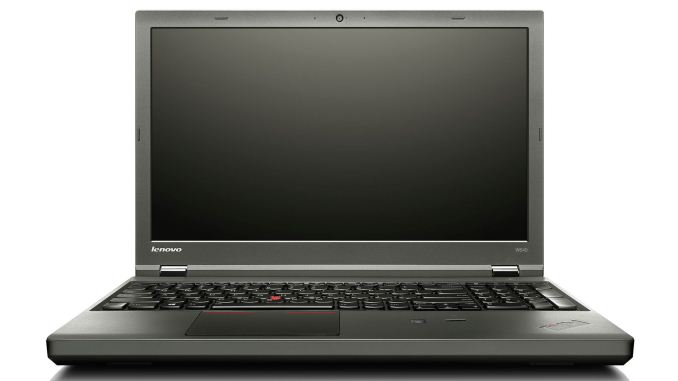


Lenovo ThinkPad W540 ($2258)
Dell Precision M4800 ($2337)
HP ZBook 15 G2 ($2615)
If you don’t need absolute maximum performance from a mobile workstation and are willing to step down to a more moderate GPU, a few other options become available. Lenovo’s ThinkPad W540 is a good option, and with an i7-4700MQ, Quadro K2100M, 2x8GB RAM, 256GB SSD, 2880×1620 IPS display, and 2×2 802.11ac WiFi it carries a price tag of $2258 (currently on sale from $2509). Dell’s Precision M4800 with a similar configuration (but with a 3200×1800 IPS display and i7-4710MQ) costs $2337 (on sale from $3338). The HP ZBook 15 G2 has similar specs to the Dell (QHD+ and i7-4710MQ) and costs $2615 (with the 32% discount code). The Dell and HP workstations can also be equipped with AMD’s competing FirePro M5100 and save about $250 in the process, and in SPECviewperf 12 the M5100 is almost always faster than the K2100M – though the difference is far less pronounced in SPECviewperf 11. Most workstation users seem to prefer Quadro over FirePro in my experience, but if you’re not locked into NVIDIA (e.g. CUDA) AMD often offers more bang for the buck.
As for Clevo options, they’re a bit more flexible as you can still get a 15.6″ display with up to the Quadro K5100M; all of the big OEMs top out at K2100M, which is about one third the processing power and half the bandwidth of the K5100M. With similar components (i7-4700MQ, 2x8GB RAM, Quadro K2100M, 240GB SSD, 802.11ac, and a 1920×1080 display), the Eurocom Racer 3W will set you back $2039 – so it’s the least expensive “moderate” mobile workstation, but it’s also missing a 3K display option. Perhaps more interesting is that you can get the Quadro K3100M, which has twice the memory bandwidth and about 25% more compute performance than the K2100M, and the price is still only $2223. K4100M adds another $640 if you need it, while K5100M would bump the total to $3691 – basically, the K5100M would cost as much as the remainder of the notebook. For those looking at something more than the K2100M but not perhaps a K5100M, however, Clevo (along with some MSI builds) is a decent option.
Closing Thoughts
Wrapping things up, again the pending launch of Intel’s Broadwell processors needs to be mentioned. It will require a new platform, however, so it could take several months before we see retail availability and there’s likely to be at least a moderate price premium at launch. Broadwell may also improve battery life and efficiency over Haswell, but there’s only so far a more efficient CPU can take you when you’re dealing with all of the other components that use power. There’s rarely any harm in waiting, though there are still quite a few sales going on that may not be around post-holidays, so if you’re not in a hurry I’d suggest waiting for at least CES to pass to get an idea of when Broadwell laptops should ship.
Basically, what it comes down to is this: when you’re looking at spending $2000 or more on a high quality laptop, it’s often best to buy right after new technology is released rather than just before the updates come out. Apple for example doesn’t generally drop much in pricing over time, so what you’d pay today for a MacBook Pro Retina 15 isn’t all that different from what people were paying at launch; it’s just one year later with a few minor speed increases due to component upgrades. When the next generation of laptops with Broadwell launch in 2015, you should have the choice of either a less expensive Haswell model or the new Broadwell options, which makes far more sense than buying right before the updated platform is released. That doesn’t mean you absolutely shouldn’t upgrade right now, as there’s always something new around the corner, but right now is likely a less opportune time for upgrading than we’ve seen in the past.

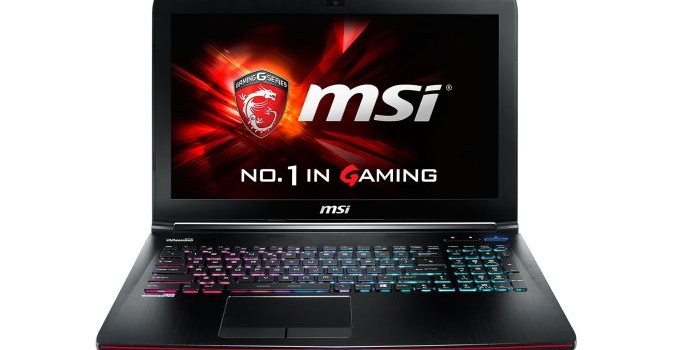

%20white-front%20angle%20start_575px.jpg)
%20white-front%20angle%20start_thumb.jpg)
%20white-front%20left%20angle_thumb.jpg)
%20white-front%20SO%20with%20start%20bar_thumb.jpg)
%20white-front%20SO_thumb.jpg)
%20white-front%20up%20angle_thumb.jpg)
%20white-front%20up%20left%20angle%20start%20bar_thumb.jpg)
